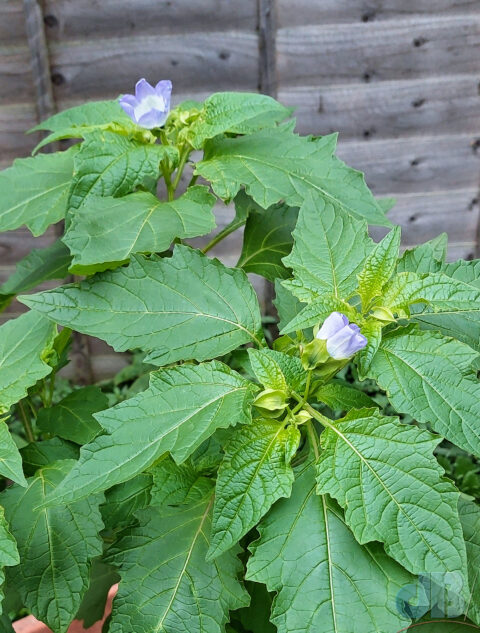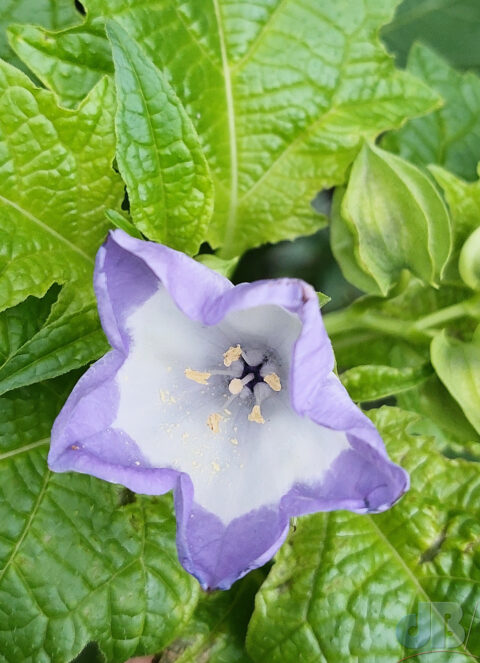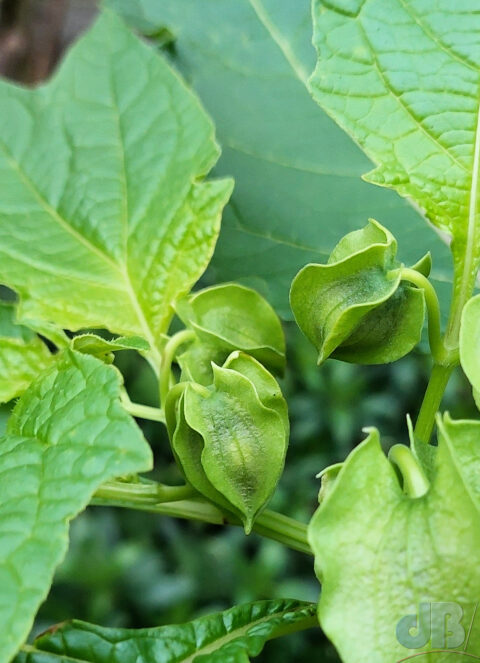As regulars to the Sciencebase site will know, I’ve been doing some ad hoc wilding of our garden for a few years now. Always hoping that blooming wildflowers would attract interesting invertebrates. There are therefore patches and pots that I’ve not managed with all sorts of odd things sprouting from them at different times of year. At the moment, there is a big tub, which used to be crocuses and daffodils that has a very tall and leafy plant growing in it at the moment, with pale-purple flowers in bloom (it’s November!).

I used the ObsIdentify app to take a couple of photos and it turns out to Apple of Peru, Nicandra physalodes. The species is also known as the shoo-fly plant (it repels aphids and other flies and although toxic is sometimes rubbed on the skin as an insect repellant. It’s also known as the Apple of Sodom, presumably somehow that relates to its encapsulated poisonous fruit.

As the name would suggest, Apple of Peru is a native to South America, self-seeds easily, and is sometimes grown as a decorative annual. I didn’t plant it, seeds from some outside source presumably landed in the tub and it’s grown where it fell. I think it’s meant to be in bloom from April to July, usually in tropical and sub-tropical climes rather than the temperate zone, so not entirely sure what it’s doing with open blossom now and setting fruit in the middle of November in England.
